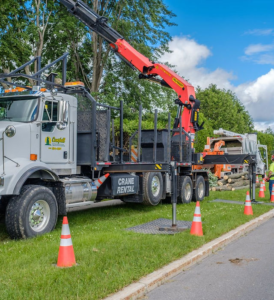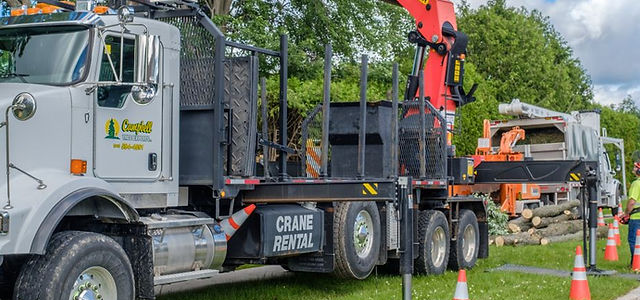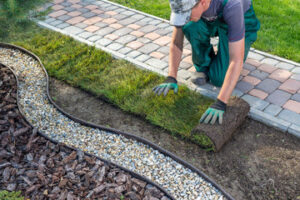Lakeway Tree Experts are called to assist in legal disputes and insurance claims regarding trees and woody plant material. They adhere to high standards of impartiality, accuracy, and honesty in their assessments and recommendations.
A professional’s trained eye can spot issues that may seem obvious to you, such as a leaning tree or insect infestations. They can also perform services such as pruning, trimming, and removing trees.

Arborists are professional experts who specialize in planting, maintaining, and caring for trees and other woody plants. They are often called tree surgeons or tree doctors, and their work is critical for the health of your landscape. Arborists can be found in landscape companies, forestry departments and as private consultants.
When selecting a tree service company, look for employees with credentials from a recognized arboriculture organization. Many credentials are individually administered by the International Society of Arboriculture, including Certified Arborist, Tree Risk Assessment Qualified, Utility Specialist and Board Certified Master Arborist. Others are conferred by industry organizations, such as the Tree Care Industry Association, which administers its own individual and business credentials, such as Certified Tree Care Safety Professional.
Some of the services tree specialists provide include diagnosis and treatment of common diseases and pests, such as Dutch elm disease and oak wilt, and removal or relocation of trees that have become a hazard due to storm damage, insect infestation or old age. They also prune and maintain trees for aesthetic, environmental or functional purposes, as well as plant trees and shrubs in the right places to ensure their healthy growth.
Tree experts are called upon in legal disputes and insurance claims to assess tree-related issues. Known as a forensic arborist, consultant arborist, liability expert, subject-matter expert or specialist, these professionals play an important role in determining the cause of damage or loss and helping legal counsel or insurance adjusters make the best decisions possible.
An independent tree expert’s impartial assessments can be invaluable to a successful subrogation effort. By assessing the circumstances of the incident and applying their knowledge of arboricultural principles, industry standards and weather conditions, they can help identify the responsible party and support efforts to recover damages.
Whether you are dealing with the aftermath of a major natural disaster or just need routine pruning and trimming, an arborist can help. These professionals can safely trim and maintain your trees, ensure that branches do not hang over power lines or obstruct views and install lightning protection systems. They can even handle the difficult job of removing trees.
Trees provide environmental benefits including energy conservation, carbon sequestration, improved air quality and storm water mitigation. They also serve as important visual assets for homes and businesses. Properly pruned trees can help maintain their appearance, health and longevity. This workshop will review the proper equipment needed to perform this task, safety procedures and best practices to be followed when pruning young or new trees.
This workshop will discuss the role of arboriculture in a residential setting and will cover such topics as proper tree planting, soil management, mulching, pruning, pest control, fertilization, cable and bracing, lightning protection, tree hazards and risk assessment, tree care during construction and tree removal. It will include a discussion of the importance of regular inspections and maintenance for residential trees as well as the importance of maintaining a comprehensive tree plan for new developments.
Licensed Tree Experts and licensed Tree Care Operators must keep records of all client contracts for services performed by the licensee. These records shall be made available to the client upon request for a fee not to exceed the actual cost of reproduction. Licensed Tree Experts shall not enter into contracts that conflict with the licensee’s professional responsibilities unless all parties are informed and consent to such contract.
recently passed legislation that establishes industry standards and creates remedies to address companies or individuals that do substandard work. The licensing provision helps to create a more-trained and knowledgeable workforce, and continuing education requirements will ensure that tree experts are aware of new techniques, equipment and research findings.
Those interested in working as tree professionals must pass an examination administered by the Board of Tree Experts. The exam is designed to evaluate the knowledge and skills of candidates regarding tree health care, safety, identification and management. The test also includes a general overview of tree biology, anatomy, physiology and structure. It is recommended that those seeking licensure as a tree expert enroll in a preparation course before taking the examination. Those who pass the examination receive a license valid for two years.
A forensic arborist’s credentials and experience are valuable tools in insurance claims and legal disputes. The specialized knowledge they bring to these situations allows them to evaluate whether an insurer or property owner was negligent in caring for trees, their maintenance, or weather events that led to damage. This can help determine the responsible party and inform legal counsel or insurance professionals of the appropriate course of action for a claim or subrogation case.
If a tree falls on someone’s home or business and causes damage, they may file an insurance claim with their property insurance company to cover costs for medical bills, repairs, or the homeowner’s deductible. If the insurance company can prove that a property owner was negligent in their care of the tree, they can recover costs from their neighbor’s insurance company through a process called subrogation.
One of the biggest challenges when pursuing subrogation cases is proving that a landowner knew that a fallen tree was dangerous. It was once common for landowners to be exempt from negligence liability when it came to the condition of the trees on their property. However, as more people live in urban areas and the need for safety inspections of trees has grown, this exemption has been removed in some states.
To prove negligence, a tree expert needs to provide evidence that the landowner knew of the damaged or dangerous tree and failed to act. This is usually accomplished through photographic evidence of the tree’s condition before the incident. The expert will also need to have the names and contact information of witnesses who can testify to the condition of the tree before it fell.
When evaluating photographic evidence, it’s important to remember that some photos are misleading. For instance, a tree in bad shape could appear to have been trimmed recently. For this reason, it’s important to examine each image carefully and compare it to the overall condition of the tree and the surrounding landscape.
In addition to photographing the damage, a tree expert should document the work required to repair the damage. This can include documentation of the size of the tree and its position, logistical characteristics that impact costs such as access issues, hazards, traffic control requirements, labor hours and rates, and the cost for specialty equipment such as cranes, loaders, etc. This information helps the insurance adjuster or legal team understand what resources were needed and why the cost was as high as it was.
Whether they’re called forensic arborists, tree-risk experts, consulting arborists, liability experts or subject-matter specialists, a tree expert’s expertise and credibility play an important role in legal disputes and insurance claims related to trees and other woody plant material. By adhering to the highest standards of impartiality, honesty and clarity in their assessments, these professionals help their clients navigate complicated legal and insurance matters.
In product liability cases, for instance, a tree expert can assist attorneys and insurance companies in determining responsibility for a case’s outcome by analyzing the available evidence and applying their knowledge of arboricultural principles, industry standards and best practices to determine whether or not a party has acted negligently or recklessly. In some instances, these professionals may even act as a neutral mediator between two parties involved in a lawsuit or insurance claim.
Forensic arborists can also help in the preparation of expert reports that serve as powerful tools for a company’s marketing and business development efforts. These documents can be used to provide an accurate description of a specific job, including the work performed, the cost of materials and labor and any other relevant information that would assist in calculating damages. In addition, they can help establish a fair price for storm-damage cleanup and ensure that the tree service company receives payment in full for its services.
Many tree experts and riggers are also active educators, leading seminars and workshops for their colleagues. Those activities may not fall under a standard Professional Liability policy, so it’s essential that these individuals carry Errors and Omissions insurance to cover any teaching-related mistakes or misrepresentations that might arise.
When hiring a tree service provider, always ask to see proof of insurance. It’s a good idea to request a certificate of insurance that contains the company’s name and contact information so that you can verify its authenticity. Also, be sure to check the insurance company’s website for updates on their coverage limits and expiration dates. If a certificate does not appear to be valid, do not hire the company and report any suspected fake certificates to the insurance company.



